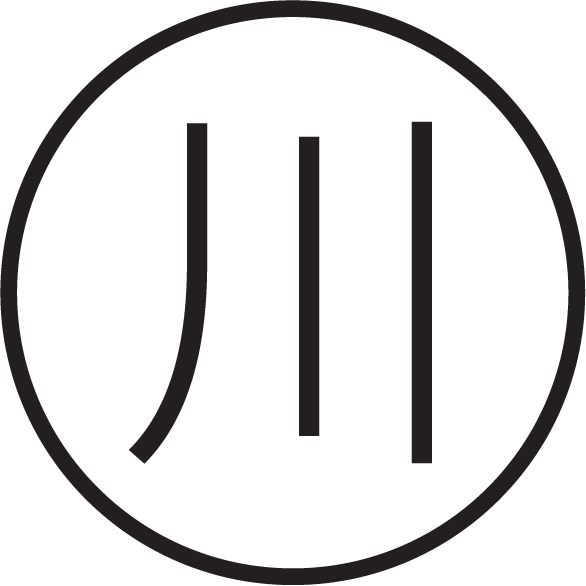Wonder Woman: A Poor Representation of Feminism

YUXUAN LI
Read the Faculty Introduction here.
Wonder Woman, a 2017 American film, became the highest grossing female superhero movie in history. Certain moviegoers regard Wonder Woman as a feminist movie which promotes female independence and power. As the director Patty Jenkins said to Variety, Wonder Woman is “the success of feminism.” However, the movie also triggered criticism of Wonder Woman’s identity as a feminist. For example, in an interview with The Guardian, director James Cameron views Jenkins’s vision of Wonder Woman as “an objectified icon” and “a step backward.” In “How Wonder Woman Is, and Is Not, a Feminist Superheroine Movie,” Kyle D. Killian also points out other aspects of Wonder Woman’s deficiency. Taking these arguments into consideration, I would like to ask, in what way is the film Wonder Woman representative, or not, of contemporary American feminism? In this research paper, I identify the answer by analyzing how the camera captures Wonder Woman’s physical appearance, how she obtains her superpower in contrast to the original comic version, and how her identity compares with recent female superhero characters. Contrary to the popular perception of Wonder Woman as a model feminist movie, I argue that the film does not meet the ideals of contemporary American feminism. Specifically, the film objectifies Wonder Woman under the male gaze, panders to patriarchy, and lacks intersectionality.
Produced by DC Films, Wonder Woman is the fourth installment of the DC Cinematic Universe adapted from the comic of the same name. The film tells the story of how Princess Diana of Themyscira, later known as Wonder Woman, discovers her full powers and true identity when fighting alongside men to end all wars during World War I. As the daughter of Queen Hippolyta, Diana was raised on the hidden island of Themyscira, which is the home of Amazonian warriors created by Zeus to protect humanity. On learning of the world war from the US pilot she rescues, Diana “ventures into the world of men to stop Ares, the god of war, from destroying mankind” (Kolpaper.com). In the final battle with Ares, she learns that she was the daughter of Zeus and achieves the ultimate victory. In addition to the exhilarating plot, Wonder Woman is also the highest-grossing film directed by a woman. The director, Patty Jenkins, was named by Time magazine as a runner-up for the Time Person of the Year in 2017. The film not only grossed over $821 million, but also gained a largely positive reputation. For example, on Rotten Tomatoes, a review-aggregation website with over 26 million visitors per month, the film holds an approval rating of 93% with an average rating of 7.64/10 (Rotten Tomatoes.com).
However, despite its reputation among certain moviegoers, Wonder Woman also received a lot of criticism. Although Wonder Woman is directed by a female director, the film still exists under the male gaze where women are objectified to satisfy a male audience. Some people argue that Jenkins’s direction “points a way forward toward the possibility for women directors” (Zacharek). While it is true that a female director directing a big-budget blockbuster film indicates a recognition of women’s ability, such progress does not go far enough. How so? The main character in Wonder Woman is shot with strong visual impact which conveys erotic cues to a male audience. In “Visual Pleasure and Narrative Cinema,” Laura Mulvey, a renowned feminist film theorist, describes such phenomenon as “women are simultaneously looked at and displayed, with their appearance coded for strong visual and erotic impact so that they can be said to connote to-be-looked-at-ness” (19). She also introduces a term to explain the reason behind this visual effect: the film is under the “male gaze.” To be succinct, Mulvey points out that the images, characters, and plots in most commercial films inadvertently privilege the male audience to offer “visual pleasure.” Although Wonder Woman is directed by a remarkable female filmmaker, it still presents the main character under the male gaze. For example, Gal Gadot, the actress who plays Wonder Woman, has a charming appearance with a slim figure, fair skin, a noble nose, and double eyelids. In addition to her appearance, her costume also objectifies her. Wearing a bustier and shorts, Wonder Woman’s body shape is intentionally flaunted on the screen. Even in action scenes, the shoots focus on her face and thighs to show how beautiful and sexy the character is. As Killian stresses, “that should not be the focus of a kickass heroine – her beauty, bone structure, and sexiness – if she is to be a feminist icon” (59). Bustier and bare thighs are not the necessity of a female superhero, but they do offer visual pleasure for the male audience. In this case, Cameron gets it right because Wonder Woman does become an objectified icon with strong erotic impact under the male gaze.
However, some film critics defend the sexualized image and refuse to admit Wonder Woman is an objectified icon. Zoe Williams, for instance, disagrees with Cameron when she writes, “this isn’t objectification so much as a cultural reset: having thighs, actual thighs you can kick things with, not thighs that look like arms, is a feminist act” (par.3). In this way, Williams denies that the exposure of Wonder Woman’s body objectifies her as a woman. Admittedly, Wonder Woman is a powerful superhero whose thighs are literally powerful weapons. In this case, the film takes this female audience perspective into consideration. However, this does not spare her from objectification under the male gaze. The film still caters to the male audience through the overexposure of her body. Such exaggerated exposure is unnecessary because it by no means makes her stronger, but, rather, makes her more attractive in the eyes of men. Therefore, it is overly optimistic of Williams to claim the sexualized image as “a cultural reset” rather than objectification.
Jenkins also responds to Cameron’s criticism by stressing that critics should not focus on the appearance of Wonder Woman. As she says to Los Angeles Times, “When people get super critical about her outfit [meaning Wonder Woman], who’s the one getting crazy about what a woman wears?” However, the sexualized image itself will diminish the belief in gender equality. In “The Empowering (Super) Heroine? The Effects of Sexualized Female Characters in Superhero Films on Women,” Hillary Pennell conducts a psychological study on the short-term impact of sexualized-heroine images on women. Pennell invited 82 female undergraduates from Midwestern University in the U.S. to participate in an experiment, in which participants were instructed to conduct a survey adapted from the Attitudes toward Women Scale (AWS) by Behm-Morawitz and Mastro, which includes items like “Men and women should share household work equally,” and “Men are better at taking on mental challenges than women,” after watching clips of sexualized female superheroes. Volunteers were asked to rank the items from “strongly disagree” (1) to “strongly agree” (7) (Pennell 217). The higher the number is, the less egalitarian attitudes toward women it demonstrates. The result shows that, compared with volunteers who did not watch the clips, “the exposure to the sexualized-heroine images of women in superhero films decreases egalitarian gender role beliefs and body esteem” (Pennell 212). In this case, even if Wonder Woman is not a vulnerable female victim, her sexualized image under the male gaze will weaken women’s belief in gender equality and lead to self-objectification. Since Wonder Woman is a box-office film, this psychological influence may affect millions of women. Therefore, as a feminist movie directed by a female filmmaker and released nearly 40 years after Mulvey’s study, Wonder Woman’s failure to escape from the male gaze demonstrates that it is a poor representation of contemporary feminism.
Besides the objectified character, Wonder Woman’s adaptation in the plot also reflects a retrogression. Compared with the original comics, the film’s adaptation of the source of Wonder Woman’s superpower indicates a submission to patriarchal society where women are defined by men. In “Wonder Woman’s Lib: Feminism and the ‘New’ Amazing Amazon,” Paul Kohl refers to Simone de Beauvoir’s feminist theory to demonstrate the original version of Wonder Woman created by William Marston in 1941 as progressively feminist. As Beauvoir states in The Second Sex, women have always been defined as the subordinate “other” by male domination in social practice. However, as Kohl points out, the original version of Wonder Woman challenges the male definition of women because “Wonder Woman’s birth is an all-woman affair” (95). Because Wonder Woman was born and raised in a world where men do not exist, Marston creates a symbol subversive of patriarchy. Women’s power is not defined by men, but comes from women. However, such resistance is greatly weakened in the 2017 film. Instead of being created out of clay by her mother and given a soul by female deities (Kohl 96), the film sets Wonder Woman as the lovechild of the god Odin, and she, thus, inherits her superpower from her father. This change in the origin of Wonder Woman’s superpower implies that “women have gained only what men have been willing to grant” (Beauvoir 19). While the original version breaks down the idea that only men have power, the film regresses to the patriarchal norm that women’s power is given by men. Killian agrees when he writes, “she [Wonder Woman in the 2017 film version] becomes more powerful than she knows because of the identity of her father, [and] what could be more patriarchal than that?” (60). Some people may refute such arguments because Wonder Woman finally beats the male villain in the movie. Admittedly, such a plot point reflects the courage, strength, and power of women. However, Wonder Woman remains under patriarchy because her victory is based on what she is given by men. Therefore, compared to the original comic book version, Wonder Woman is a poor representation of feminism because it does not break the male definition of women. The film instead submits to a normative patriarchal society.
Aside from the sexualized visual effect and plot adaptation based on patriarchal society and its expected norms, Wonder Woman falls behind the third wave of feminism due to a lack of intersectionality. In “Superheroes and Third-Wave Feminism,” Neal Curtis demonstrates the relationship of the 21st-century superhero industry with the third wave of feminism. Curtis identifies “a broader engagement with the intersectional axes of class, sexuality, race, ethnicity, disability, and complex gender politics” (382) as the core of the third wave of feminism, which began in the early 1990s United States. The recent trend in superhero comics reflects such intersectionality. Curtis mentions Kamala Khan in Ms. Marvel, which debuted in 2014, as an example. As a “young Muslim woman, a Pakistani-American, a working-class millennial generation” (Curtis 382), Khan engages broader groups of women into the discussion on intersectional women’s identities, which is consistent with the third wave of feminism. However, compared with the female superhero image in contemporary comics, the film Wonder Woman fails to keep up with this evolution. While Killian demonstrates this backwardness from the perspective of heteronormativity (61), I believe the limit on race is more obvious evidence for the lack of intersectionality. Although the actress playing Wonder Woman is Israeli, her appearance is that of a typical white woman: pale, slender, tall nose, and long hair. Moreover, the main characters in the film are all played by white people. Some may argue that this is because the story is set in England during World War I. However, even in the birthplace of Wonder Woman, a fictional ideal matriarchal society, only a few people of color are shown on screen, they only appear for a few seconds, and they have no impact on the plot. In addition to sexual orientation and race, Wonder Woman also fails to engage women from different classes. As the princess of Amazon, Wonder Woman was born in a privileged class. She does not earn a living by working, nor has she suffered from class discrimination. Hence, such a privileged character is less likely to resonate with the audience, especially women from the working class. In general, what Wonder Woman reflects is not gender equality for all women, but feminism for heterosexual, privileged, and fair-skinned women. Therefore, compared to many current female superhero characters, Wonder Woman neglects the intersectionality among different groups of women, and, thus, falls behind the third wave of feminism.
In conclusion, Wonder Woman does create an inspiring female superhero who is powerful and empathic, but this so-called representative of feminism does not meet the ideals of contemporary American feminism. The character is objectified by the male gaze to please the target male audience, and the sexualized depictions reduce the target women’s belief in gender equality. Meanwhile, the adaptation in the source of Wonder Woman’s superpower implies a submission to men who define women in patriarchal society. Last but not least, the feminism promoted by Wonder Woman is limited to a certain group, lacking intersectionality among race, class, and sexuality. Such identification provides moviegoers who believe that Wonder Woman is a symbol of feminism with new perspectives to view the film, thus inspiring them to reevaluate the impact of Wonder Woman on disseminating feminism in current society. There is no denying that Wonder Woman brought broad public attention to a rising generation of superheroines, such as in Captain Marvel released in 2019, and Black Widow scheduled to be released in 2020. However, if fans and critics regard Wonder Woman as a model of contemporary feminism, the stereotype of feminism is likely to be limited to such “equality” within white elites who succumb to patriarchy and hinder the real social practices of equal rights for most people in the world. Therefore, it is important to reflect on the poor representation of feminism in Wonder Woman and rethink the depiction of a progressive feminist character in commercial superheroine films.
Works Cited
Curtis, Neal, and Valentina Cardo. “Superheroes and Third-Wave Feminism.” Feminist Media Studies, vol. 18, no. 3, 2017, pp. 381–396., doi:10.1080/14680777.2017.1351387.
Freeman, Hadley. “James Cameron: ‘The Downside of Being Attracted to Independent Women Is That They Don’t Need You’.” The Guardian, Guardian News and Media, 24 Aug. 2017, www.theguardian.com/film/2017/aug/24/james-cameron-well-never-be-able-to-reproduce-the-shock-of-terminator-2.
Jenkins, Patty, director. Wonder Woman. Mondadori, 2017.
Killian, Kyle D. “How Wonder Woman Is, and Is Not, a Feminist Superheroine Movie.” Journal of Feminist Family Therapy, vol. 31, no. 1, 2018, pp. 59–61, doi:10.1080/08952833.2018.1556487.
Kohl, Paul. “Wonder Woman’s Lib: Feminism and the ‘New’ Amazing Amazon.” The Ages of Wonder Woman: Essays on the Amazon Princess in Changing Times, edited by Joseph J. Darowski, McFarland & Company, Inc., Publishers, 2014.
Kolpaper. “Wonder Woman Wallpaper – KoLPaPer – Awesome Free HD Wallpapers.” KoLPaPer, Kolpaper Wallpaper, 16 Mar. 2020, www.kolpaper.com/2497/wonder-woman-wallpaper/.
Mulvey, Laura. “Visual Pleasure and Narrative Cinema.” Visual and Other Pleasures, E-book, Palgrave Macmillan, 1989, pp. 14–26., doi:10.1007/978-1-349-19798-9_3.
Pennell, Hillary, and Elizabeth Behm-Morawitz. “The Empowering (Super) Heroine? The Effects of Sexualized Female Characters in Superhero Films on Women.” Sex Roles, vol. 72, no. 5-6, 2015, pp. 211–220., doi:10.1007/s11199-015-0455-3.
Setoodeh, Ramin, and Ramin Setoodeh. “‘Wonder Woman’ Director Patty Jenkins on Equal Pay, Hollywood Sexism and James Cameron’s Nasty Words.” Variety, 11 Oct. 2017, www.variety.com/2017/film/features/patty-jenkins-wonder-woman-hollywood-sexism-equal-pay-james-cameron-1202583237/#article-comments.
Woerner, Meredith. “The World Needs Wonder Woman. Director Patty Jenkins Explains Why.” Los Angeles Times, 30 May 2017, www.latimes.com/entertainment/herocomplex/la-et-hc-wonder-woman-patty-jenkins-20170530-story.html.
“Wonder Woman (2017).” YouTube, YouTube, 15 May 2017, www.youtube.com/watch?v=Pd1aEcZsLtQ.
Zacharek, Stephanie. “‘Wonder Woman’ Review: Gal Gadot Is a DC Marvel.” Time, 1 June 2017, www.time.com/4799963/wonder-woman-review/.



Recent Comments